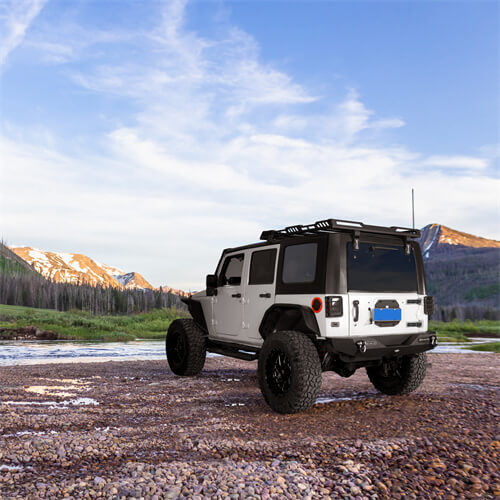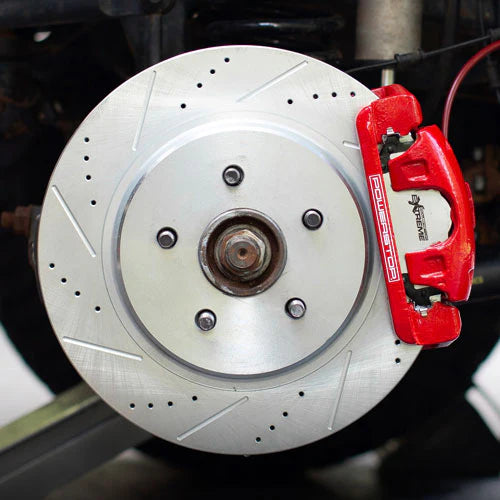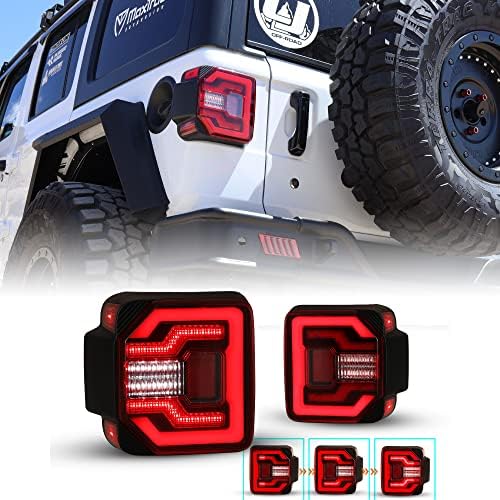Stop! 6 Signs Your Jeep Brake Needs Service

Introduction:
Have you checked your Jeep’s engine oil, radiator water level, and tires in your 5000-kilometer maintenance routine? But you forget to check one major safety part of your vehicle, the brake system. We often ignore brake maintenance, which results in brake problems in your Jeep. If you are that person, read more in this article to find the early signs of brake problems that need urgent repair. Brakes are needed to control the driving by slowing down or stopping the vehicle when reaching a destination. Brake problems are frustrating when traveling and extremely life-threatening for you and others.

Brake Maintenance:
Updating your Jeep with new lights and maintaining your Jeep engines is part of your routine, but regular brake inspections are also really important to avoid any damage to your vehicle's brake system. Brake maintenance includes
- Checking the brake fluids and refilling them if needed,
- Flushing the brake fluids every 25000 miles if the fluid is milky or cloudy means the fluid must be changed.
- Remove the air from the system by bleeding the brake line every 2-3 years.
- Replace or upgrade your brake parts
Factors of Brake Deterioration:
Avoid these practices when driving, which can damage your vehicle's brake system and cause you distress.
- Carrying weight that exceeds the vehicle manufacturer's recommended limit.
- Late brake or heavy brake.
- Wet weather.
Signs to Service Your Brakes:
A malfunction of the brakes will not only be a risk for your vehicle but also for you, your passengers, and other people on the road. Make sure not to ignore any visible signs of the Jeeps to avoid trouble when driving. Look out for these seven signs that indicate the brake needs repair.
- Spongy Brake Pads
- Brake Noises
- Brake Fluid Leak
- Vehicle Pulling to One Side
- Vibration When Braking
- Reduce Braking Power
- The Brake Light is On

Spongy Brake Pads:
Issue: The presence of air or moisture in the brake lines is frequently indicated by a spongy brake pedal, one that depresses too far before applying the brakes. This may result in less effective braking and potentially hazardous circumstances.
Fix: You must bleed the braking system to solve this problem. Taking out the moisture or trapped air from the brakes is known as bleeding them. A skilled mechanic or a brake bleeding kit can perform this. To remove the old brake fluid and air bubbles, start by attaching a clear hose to the brake bleeder valve, opening the valve, and having a helper push the brake pedal. Close the valve after repeating this procedure until clean braking fluid passes through the hose. This ought to lead to a firm brake pedal.
Brake Noises:
Issue: Strange brake noises, such as squeaking, screaming, or grinding, might point to some braking problems. These noises may be the consequence of rotor damage, worn brake pads, or foreign objects snagged in the brakes.
Fix: Replace the brake pads if worn brake pads are the source of the noise. Additionally, the brake rotors should be inspected and possibly resurfaced or replaced. You must take out any foreign objects that are contributing to the noise from the brake system. In some instances, the brake pads may have wear indicators built into them that make noise when they make contact with the rotors, indicating that it's time to replace them.
Brake Fluid Leak
Issue: Leaking brake fluid is a severe problem since it may result in brake failure. The brake lines, calipers, or master cylinders might be ruptured and leaking.
Fix: It's crucial to locate the leak's source and fix it. Brake lines, calipers, or the master cylinder that have been damaged need to be fixed or replaced. After that, refill the brake fluid with the right kind of brake oil that's compatible with your car. It suggested bleeding the brakes that are required to remove air or moisture from the system due to the leak and restore proper brake operations.
Vehicle Pulling to One Side
Issue: When you press the brakes, if your car pulls to one side, it may be because of uneven brake pad wear or a problem with the brake caliper.
Fix: Begin to look for indications of inconsistent wear on the brake pads. Replace them if you find one. Furthermore, it is essential to inspect the brake caliper on the side of the vehicle that is pulling. Unbalanced braking may be caused by a caliper that sticks or is broken. To maintain consistent braking on both sides, the caliper may need to be replaced or rebuilt.
Vibration When Braking
Issue: When applying the brake, you feel a vibration in your steering wheel or brake pedal may serve as an indication that the brake rotors are damaged. Such an issue may make driving inconvenient and limit the performance of the brakes.
Fix: If you feel any vibration when applying brakes, you should get the brake rotors checked. Depending on the amount of damage, they can either be resurfaced or replaced if they are warped or have a severe runout. To avoid future rotor warping, make sure the wheel lug nuts are tightened appropriately while mounting the wheels.
Reduce Braking Power
Issue: There are many reasons why the brakes feel less responsive or powerful than usual and have reduced stopping power. Brake system leaks, old brake pads, and malfunctioning master cylinders are typical offenders.
Fix: Replace your worn-out brake pads immediately. The friction required for efficient braking is decreased by worn brake pads. Address the leak's source, as discussed before, if your braking system is leaking. Finally, if you think the problem is a failing master cylinder, have a qualified mechanic examine it and maybe replace it. A failed master cylinder can make the brake pedal feel mushy and reduce braking strength.

Illuminating Brake Light
Not always being extremely conscious is necessary to spot braking faults. Your Jeep can sometimes tell you any faulty information by indicating the alert light on! The brake light points to numerous factors, such as worn brake pads or insufficient braking fluid, which can cause your brake light to illuminate. Make sure your parking brake is not engaged when you see the brake light come on. If the light is on but the parking brake is not engaged, perform a thorough brake investigation, and if necessary, consult a professional for guidance.
Conclusion
In conclusion, it's critical for your safety on the road to identify and fix frequent brake issues. Your vehicle's braking system can stay in good working order with proper maintenance and prompt repairs. Regular checks, such as monitoring the amount of brake oil and the condition of the brake pads, can help find and stop these problems before they become serious. To maintain the safety and dependability of your vehicle's braking system, it is always advisable to seek the advice of a trained mechanic if you have any questions about diagnosing or resolving brake problems.
Brakes are a very important part of any vehicle; their maintenance and care are necessary from time to time. Brakes help you drive safely, and if the brake system fails, even an expert driver can’t control his vehicle to disbalance or avoid an accident. So carefully look for minor faults before damaging the whole brake system and endangering other's lives on the road.
